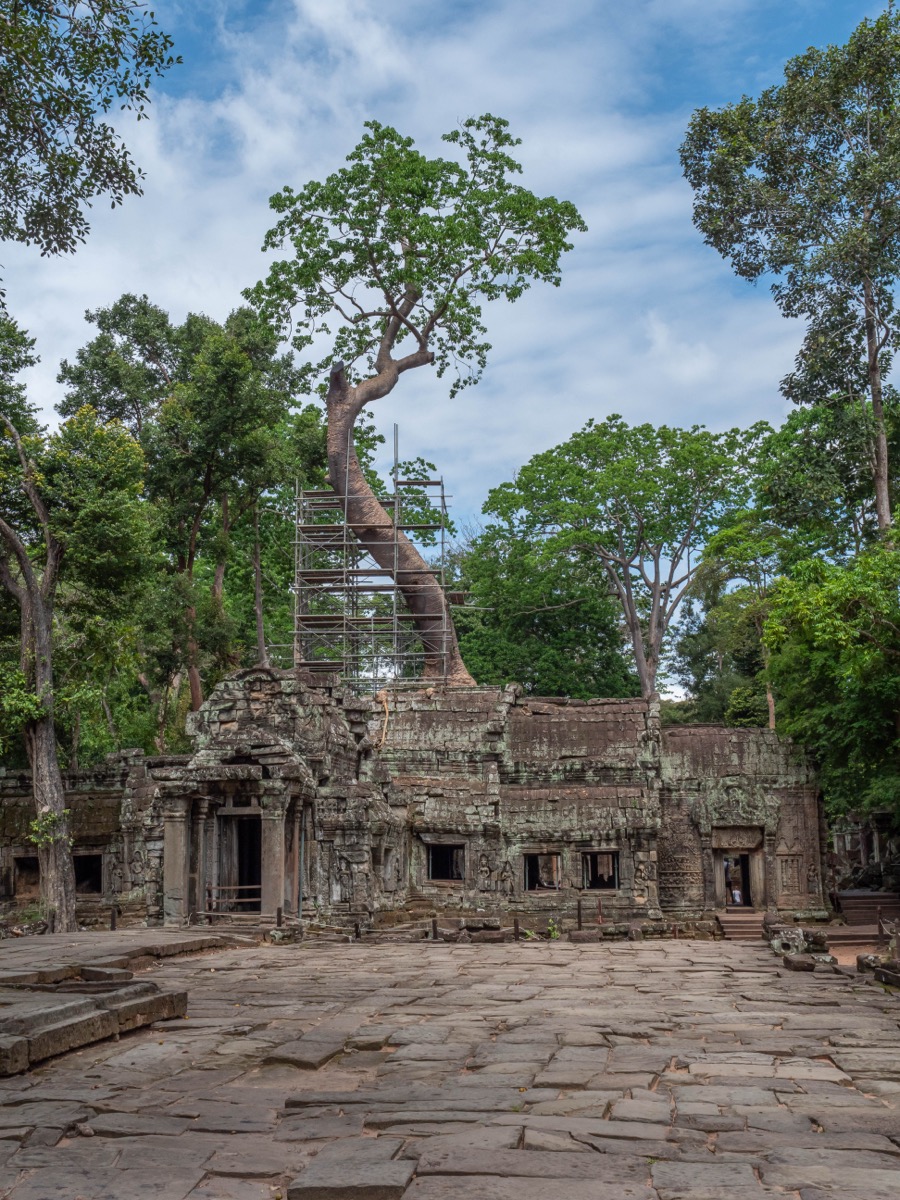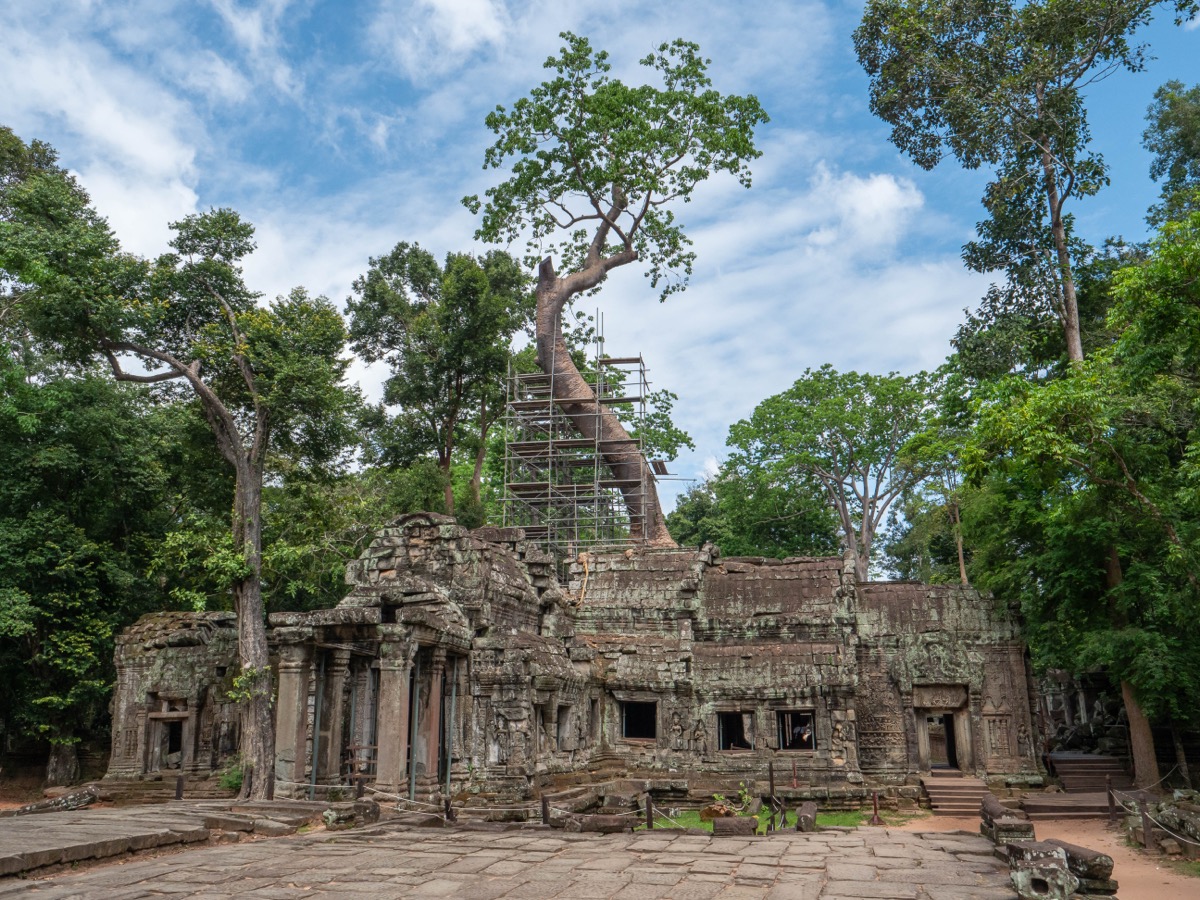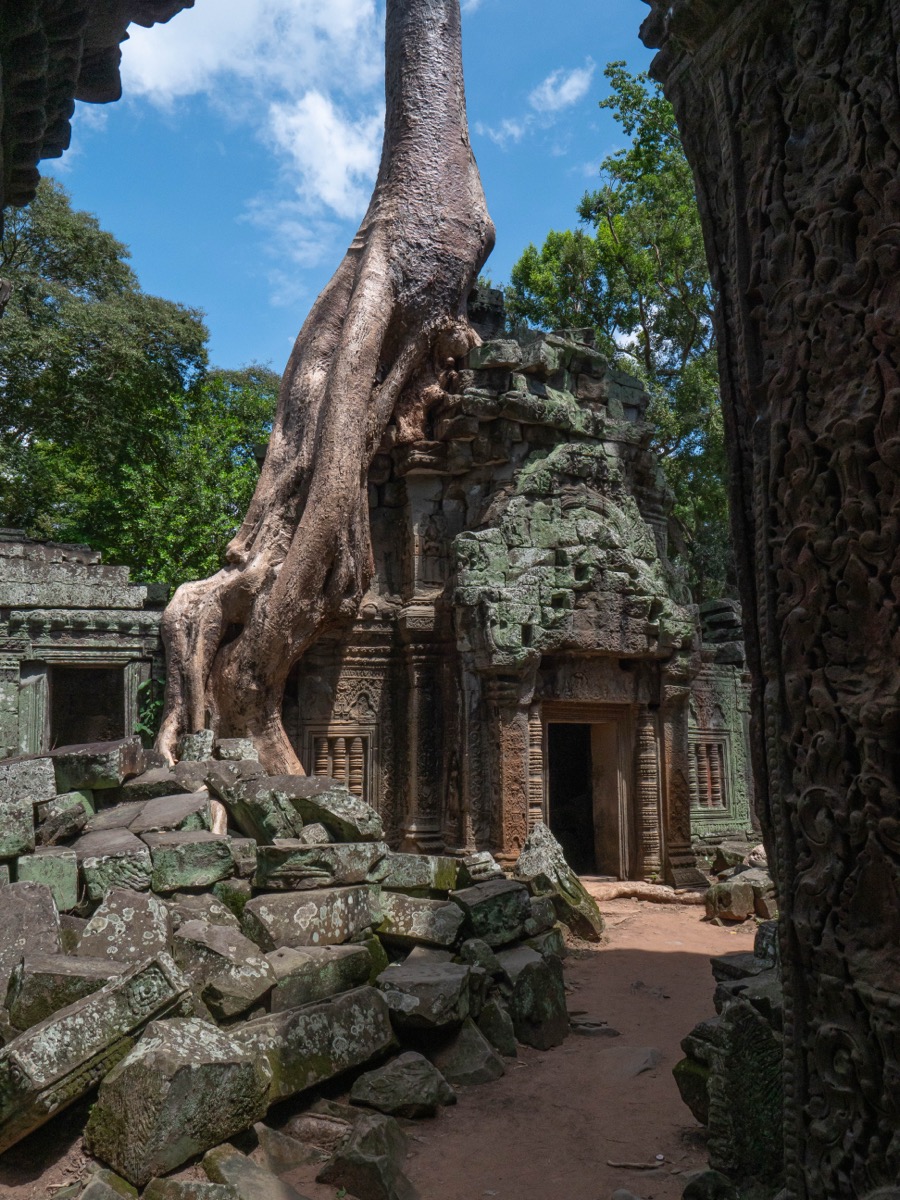Ta Prohm - តាព្រហ្ម
A Temple of Memory and Meditation
Ta Prohm was built in the late 12th century by King Jayavarman VII, shortly after the construction of Angkor Thom. It was intended to serve both as a Mahayana Buddhist monastery and as a memorial temple in honor of the king’s mother.
Its original Sanskrit name, Rajavihara, means “royal monastery.”
A Full-Fledged Monastic City
Ta Prohm was a vast religious complex, once inhabited by several thousand people: monks, priests, servants, dancers, teachers.
The temple consists of:
- An entanglement of galleries, courtyards, and sanctuaries,
- Pavilions connected by dark corridors,
- An asymmetrical layout, reflecting the evolving functions of the site.
Unlike other temple-mountains, Ta Prohm favors enclosed spaces and inner paths, conducive to meditation.
The Jungle’s Imprint
What makes Ta Prohm unique is the deliberate decision to leave it in the state of its rediscovery in the early 20th century. The École française d’Extrême-Orient, in charge of restoration, chose not to remove the trees, preserving the site’s romantic and striking atmosphere.
Notable Trees:
- Kapok trees (Ceiba pentandra) with sprawling roots,
- Banyans, whose trunks envelop the walls,
- Ficus and other invasive tropical species.
These trees do not merely cover the temple—they fuse with it, creating a powerful image of nature reclaiming what humanity built.
Spiritual Symbolism
Ta Prohm embodies:
- The vanity of power in the face of time,
- Impermanence, a central theme in Buddhism,
- The potential harmony between culture and nature.
It evokes less domination and more renunciation, often inspiring silent contemplation in visitors.
A Cinematic and Iconic Site
Ta Prohm became world-famous after serving as a filming location for Tomb Raider (2001), starring Angelina Jolie. This media exposure increased visitor numbers, but also fascination with its “lost world” atmosphere.
Visiting Ta Prohm Today
- Best time: early morning, before the crowds.
- Access: included in the Angkor pass, 1 km from Banteay Kdei.
- Recommended duration: 1 to 2 hours.
- Highlights:
- Roots wrapping around towers and windows,
- Dedication inscriptions,
- Filtered light through foliage, ever-changing with each step.
Conclusion
Ta Prohm is more than a temple—it is a silent dialogue between stone and vegetation, between human memory and natural force. It represents the beauty of the living ruin, the very soul of Angkor in its most moving, fragile, and eternal form.
Built in the 12th century under the reign of King Jayavarman VII, Ta Prohm is famous for its unique appearance, with ruins overgrown by lush vegetation.
Tree roots intertwine with the temple’s stones, creating a picturesque and mystical landscape. The temple was deliberately left partially in its original state to preserve its atmosphere.
The detailed bas-reliefs and carvings tell stories of Hindu mythology and daily life during the Khmer Empire.
As one of Angkor’s most iconic sites, Ta Prohm draws many visitors from around the world with its fascinating history and unique beauty.


